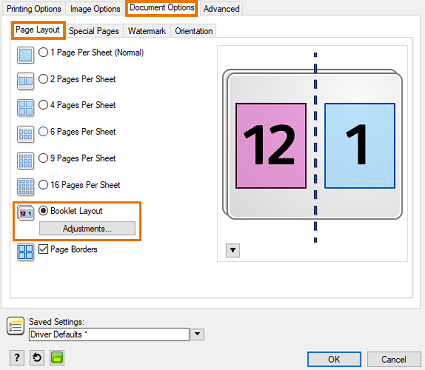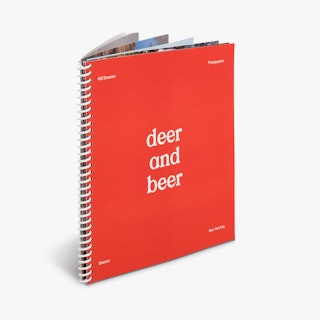Creative Finishing Techniques That Elevate Your Booklet Printing Results
Creative Finishing Techniques That Elevate Your Booklet Printing Results
Blog Article
The Important Guide to Comprehending Pamphlet Printing Options and Techniques
The procedure of brochure printing involves numerous factors to consider that can substantially affect the end product. From picking the proper style and size to recognizing the nuances of binding methods, each choice plays an important role. Furthermore, factors such as paper stock and printing methods additional influence the efficiency of the brochure. As one browses these options, it comes to be essential to grasp just how they interconnect and what that suggests for the overall result.
Comprehending Booklet Layouts and Sizes
When taking into consideration brochure printing, understanding the numerous formats and sizes readily available is necessary for accomplishing the wanted presentation. Pamphlets can be produced in many formats, consisting of saddle-stitched, spiral-bound, and perfect-bound, each offering distinctive advantages. Common dimensions range from standard letter (8.5 x 11 inches) to smaller alternatives like A5 (5.8 x 8.3 inches), allowing for flexibility based upon web content and target audience.Selecting the suitable dimension can influence both the format and visitor involvement. Larger dimensions could suit visually driven material, while smaller sized formats may be a lot more straightforward and portable. Additionally, the variety of web pages impacts the choice of binding technique, as thicker brochures might call for tougher bindings. Ultimately, comprehending these facets enables a more tailored approach, making sure that the last item straightens with the intended message and visual, enhancing the general efficiency of the interaction.
Picking the Right Paper Supply

Binding Techniques: Considerations and choices
When it comes to binding approaches for booklets, several choices are readily available, each with distinctive benefits. Saddle stitch binding offers an economical remedy for thinner booklets, while ideal binding methods provide a more refined appearance for thicker magazines. Wire-O binding attracts attention for its resilience and ease of usage, making it ideal for files that call for adaptability.
Saddle Stitch Binding
Saddle stitch binding offers a economical and functional option for setting up pamphlets, making it a preferred selection amongst companies and publishers. This binding method involves folding sheets of paper in half and stapling them along the fold line, developing a neat and orderly appearance. Typically suitable for brochures with a lower page count, saddle sewing is excellent for publications, sales brochures, and educational products. The simplicity of this technique permits quick manufacturing and is usually preferred for short runs or promotional things. It is necessary to keep in mind that saddle stitch binding might not be suitable for thicker pamphlets, as the spinal column may not hold up under boosted weight. On the whole, it continues to be a trustworthy choice for many printing jobs.
Perfect Binding Techniques
Perfect binding is a widely used technique that gives a expert and polished coating to publications and pamphlets. This technique entails gluing the pages with each other at the spine utilizing a strong adhesive, enabling for a tidy edge and the capacity to hold a larger number of web pages compared to saddle stitching. Perfect binding is specifically suitable for thicker pamphlets, such as catalogs and annual records, where a sturdy, level back is desired. Furthermore, it supplies the option for a published cover that can be made to enhance aesthetic allure. However, considerations such as web page matter, paper weight, and the intended use of the pamphlet should be considered, as they can impact durability and general top quality.
Wire-O Binding Options
Wire-O binding, known for its toughness and adaptability, supplies an excellent option for booklets that require simple page turning and an expert appearance. This binding technique utilizes a series of metal loops that hold pages securely, allowing them to lie level when open. It is specifically ideal for guidebooks, discussions, and directories because of its durable nature. Wire-O binding is offered in different shades and diameters, fitting various page matters and densities. Furthermore, it permits the inclusion of tabs and covers, improving the brochure's overall visual. Factors to consider for Wire-O binding include the choice of cord color, the size of the loopholes, and the degree of customization desired, every one of which can exceptionally influence the last product's appearance and performance.
Digital vs. Offset Printing: Which Is Best for You?
When selecting a printing approach for brochures, understanding the distinctions between digital and counter printing is vital. Digital printing utilizes modern-day technology to generate top notch prints rapidly and cost discover here effectively, making it suitable for short runs or tasks requiring fast turnaround times. It permits personalization, offering the capability to publish on-demand with very little waste.In comparison, offset printing is a typical technique that masters creating huge quantities with constant quality. It includes moving ink from a plate to a rubber blanket, then to the paper, which causes dynamic shades and precise information. Balance out printing commonly needs longer setup times and is extra affordable for bigger volumes.Ultimately, the option in between electronic and counter printing depends on project demands, budget plan, and wanted amount. For tiny, time-sensitive projects, digital may be the very best option, while countered might be better for larger, top quality productions.

Designing Your Brochure: Tips and Best Practices
When designing a booklet, mindful focus to design, font choice, and color use can greatly boost its performance. A well-structured design guides the viewers's eye, while ideal font styles guarantee readability and convey the wanted tone. Furthermore, effective usage of shade can evoke feelings and emphasize essential information, making the total layout a lot more impactful.
Selecting the Right Layout
Just how can one successfully choose the appropriate design for a booklet? Initially, it is necessary to assess the booklet's objective and target audience. A clean, arranged layout boosts readability and engagement. Making use of a grid system can help in aligning elements regularly, producing an expert appearance. Furthermore, including aesthetic hierarchy with varying sizes and positionings of images and message can guide the visitor's eye and stress vital info. It is additionally important to leave enough white space, which stops congestion and allows for much better emphasis. Finally, checking various layouts with mock-ups can give insight into exactly how the layout performs in real-world situations, making certain that the final product satisfies both functional and aesthetic demands.
Picking Ideal Fonts
A well-chosen font can significantly improve the general layout of a pamphlet, enhancing the format and enhancing the content's message. The selection of fonts must take into consideration readability, specifically for body message, as it assures the details comes to all viewers. Sans-serif typefaces are often preferred for digital layouts, while serif typefaces can offer a standard feeling in printed materials. It's advisable to restrict font selections to 2 or three to maintain aesthetic comprehensibility. Furthermore, font style size plays an important duty; headings ought to be unique yet not frustrating, while body message ought to be comfortable for reading. When choosing fonts, alignment with the pamphlet's style and target audience is important for effective interaction and visual appeal.
Effective Use Color
Shade functions as a powerful tool in brochure design, shaping understandings and assisting reader feelings. It can evoke sensations of depend on, excitement, or peace, relying on the hues chosen. Developers must consider color theory concepts, ensuring that the selected scheme aligns with the brochure's message and target market. Using warm colors like red and orange can produce seriousness, while cooler tones like environment-friendly and blue foster tranquility.Additionally, comparison plays a vital function; complementary shades can enhance readability and visual appeal. Uniformity in shade usage throughout pages further strengthens brand identification and cohesion. Ultimately, reliable color execution not just captures focus yet additionally enhances the booklet's purpose, making it an important element of successful style.
Ending Up Touches: Coatings and Special Impacts
While lots of take into consideration the web content and layout of a pamphlet one of the most important elements, the ending up touches, such as finishings and unique effects, play a necessary duty in boosting its general appeal. Coatings can give security and durability, making certain that the brochure withstands wear and tear. Matte surfaces use a sophisticated, non-reflective surface area, while shiny layers can make colors appear even more dynamic and attractive. Unique impacts, like embossing or aluminum foil marking, add a responsive dimension that can create a memorable impact. These methods can highlight particular locations, drawing focus to vital details or creating visual interest. Additionally, UV covering can offer a high-shine coating that elevates the total look.Together, these completing touches not just boost the booklet's visual however also communicate professionalism and reliability and focus to detail, eventually leaving a long lasting effect on the visitor.
Cost Factors To Consider for Pamphlet Printing
Comprehending the different expense considerations for booklet printing is necessary for organizations and companies aiming to enhance their budgets. Key factors influencing expenses consist of the selection of ink, binding, and paper methods. Greater high quality products, such as superior paper or specialized inks, typically increase the general expense. In addition, the size and page count of the pamphlet try these out play a substantial role; larger web link brochures require even more resources and time to produce.Another essential factor to consider is the printing method, whether digital or offset, as each has its very own prices structure and viability for various quantities. Organizations must also consider style costs, which can differ based on complexity and the use of specialist solutions. Ultimately, shipping and handling fees can contribute to the total, specifically for huge orders. By evaluating these aspects, companies can make enlightened choices that line up with their monetary capabilities while achieving the wanted quality in their published materials.
Regularly Asked Questions
What Are the Ecological Influences of Brochure Printing?
The environmental effects of booklet printing include logging from paper production, carbon emissions from transportation, and waste generation from thrown out products - Booklet Printing. Lasting practices, such as making use of recycled paper and environment-friendly inks, can reduce these impacts
How Can I Make Certain Shade Accuracy in My Brochure?
To assure shade accuracy in a pamphlet, one must utilize calibrated monitors, utilize expert shade accounts, conduct test prints, and select top notch printing solutions that use shade matching and proofing alternatives for ideal outcomes.
What Is the Normal Turnaround Time for Pamphlet Printing?
The regular turnaround time for pamphlet printing differs relying on the complexity and quantity - Booklet Printing. Normally, it varies from a few days to 2 weeks, affected by elements such as publishing approaches and completing requirements
Are There Minimum Order Quantities for Pamphlet Printing?

Can I Publish Pamphlets in Several Languages?
Publishing brochures in several languages is possible. Lots of printing solutions offer choices for bilingual or multilingual layouts, enabling efficient communication. Cautious planning assurances that design elements fit different languages without endangering readability or aesthetics. Additionally, factors such as paper supply and printing methods further influence the effectiveness of the brochure. When considering booklet printing, recognizing the numerous formats and dimensions offered is vital for achieving the desired discussion. When picking a printing approach for booklets, comprehending the distinctions in between electronic and counter printing is vital. Furthermore, the size and web page count of the booklet play a considerable duty; bigger pamphlets require more resources and time to produce.Another vital factor to consider is the printing strategy, whether electronic or balanced out, as each has its own rates framework and suitability for various quantities. The ecological effects of pamphlet printing include deforestation from paper manufacturing, carbon discharges from transport, and waste generation from thrown out products.
Report this page